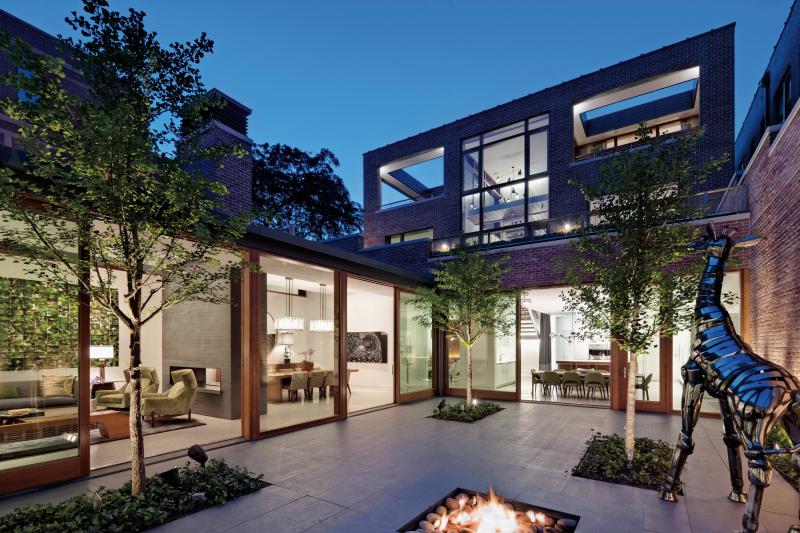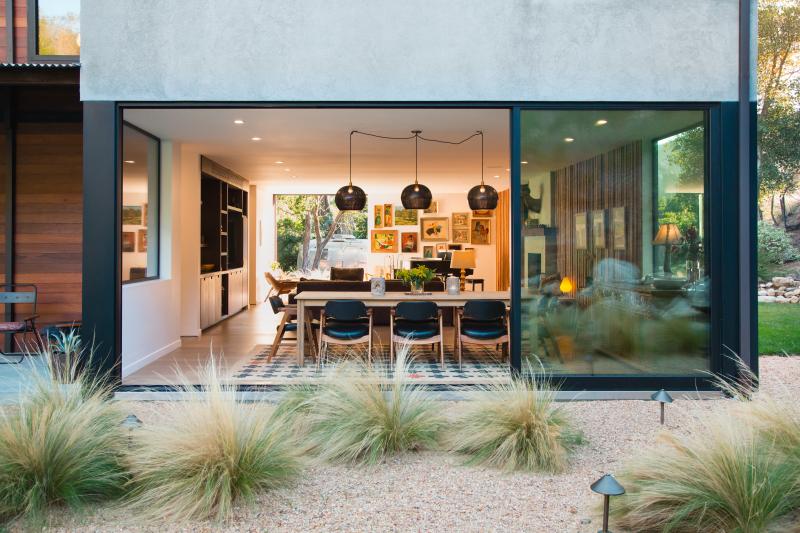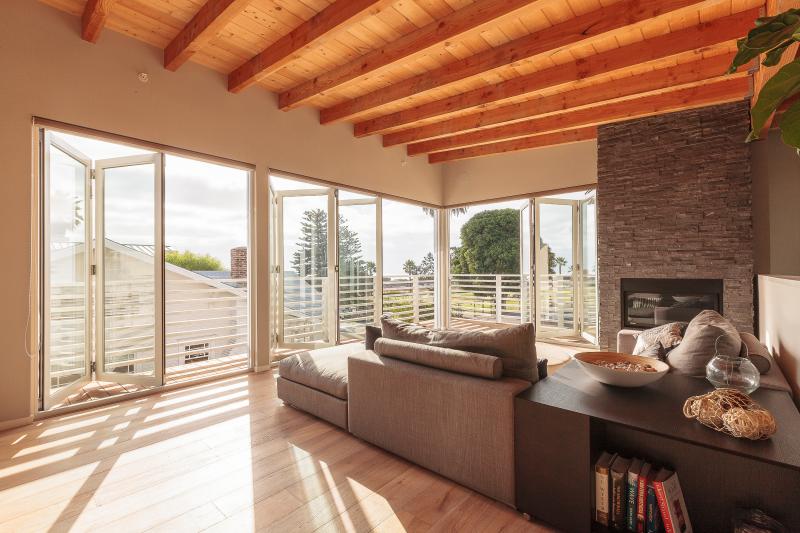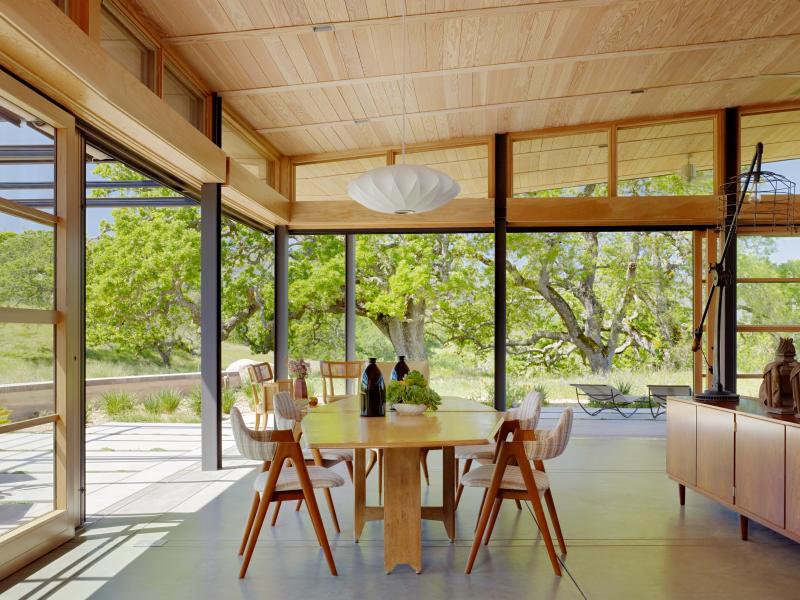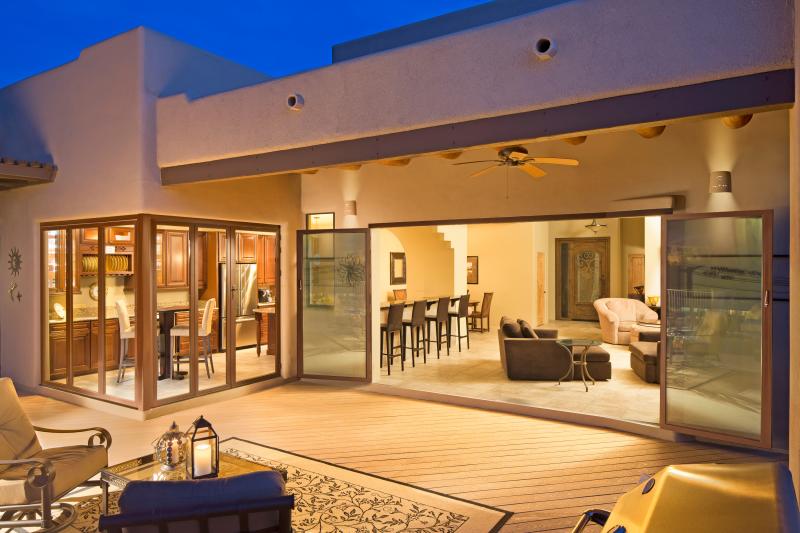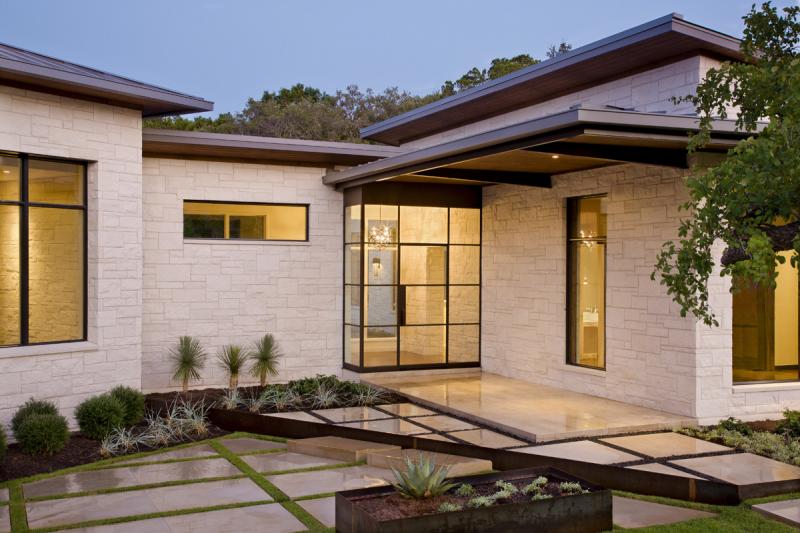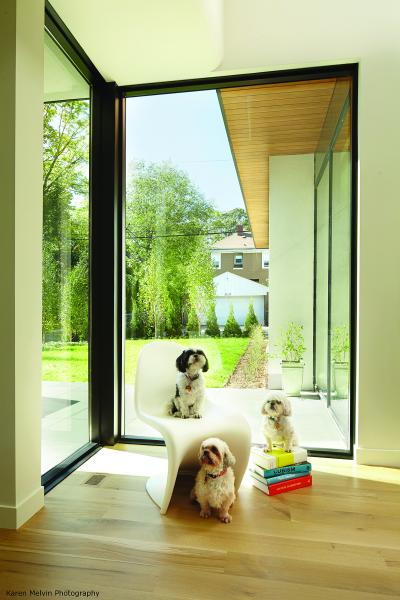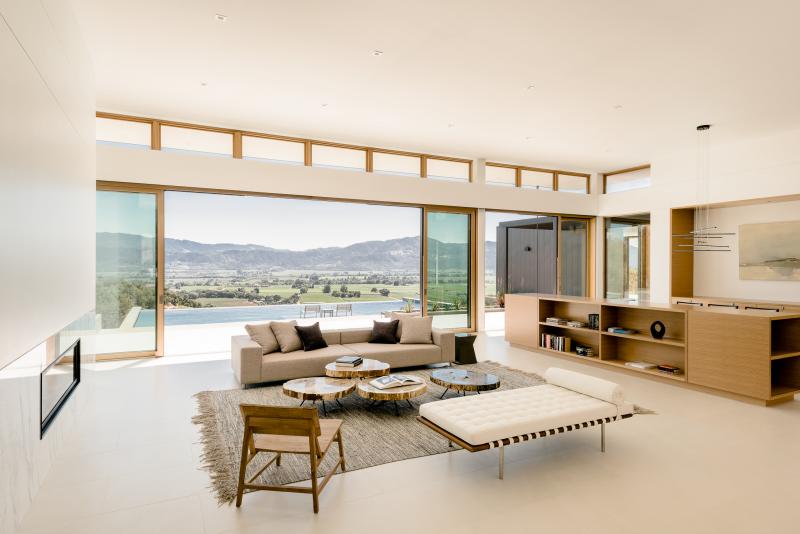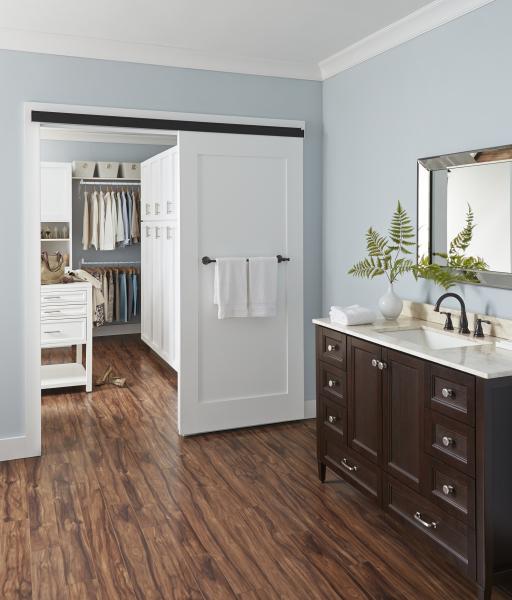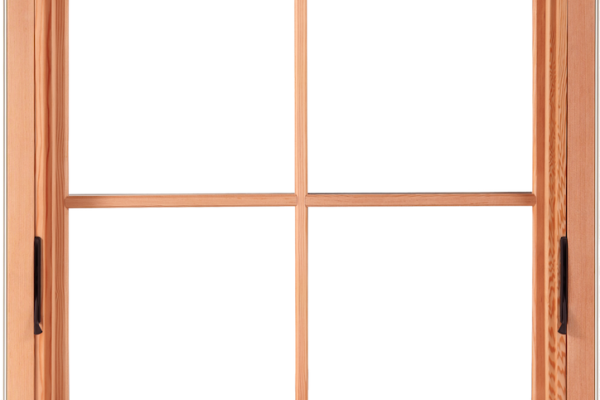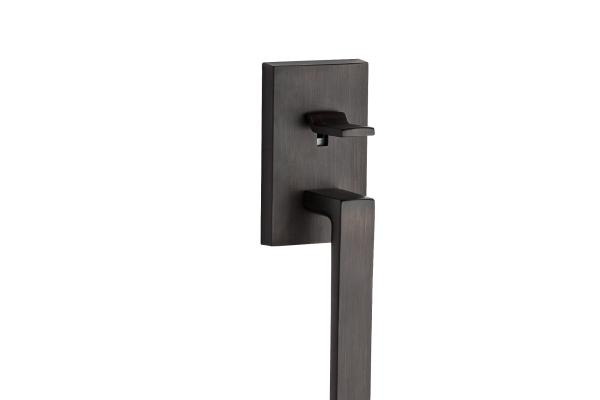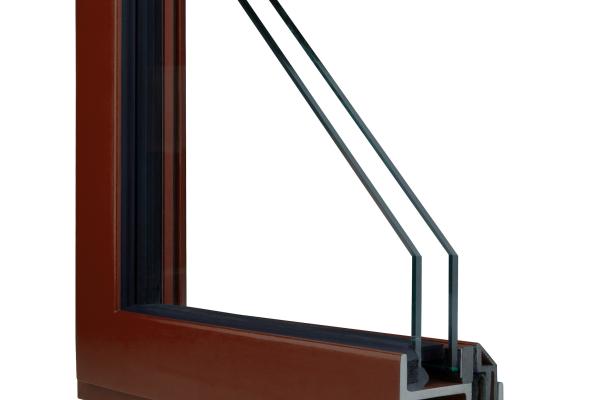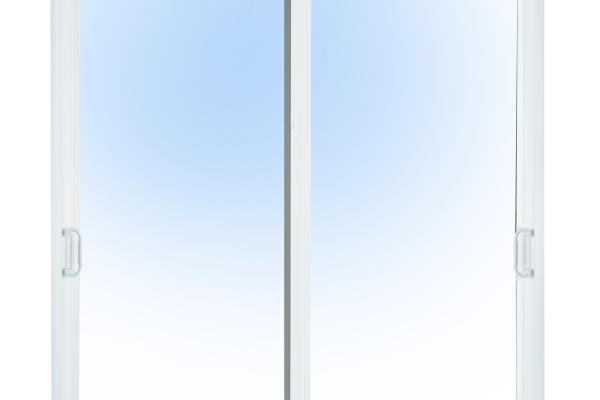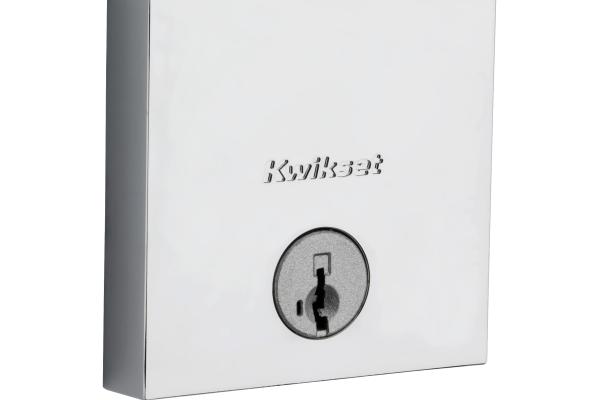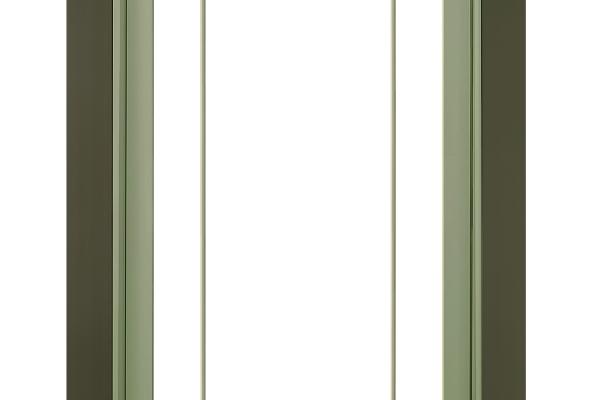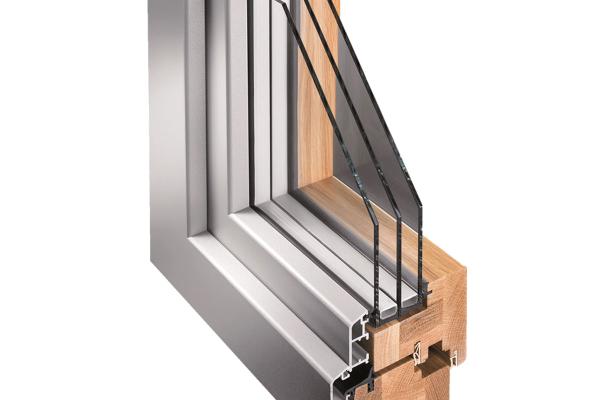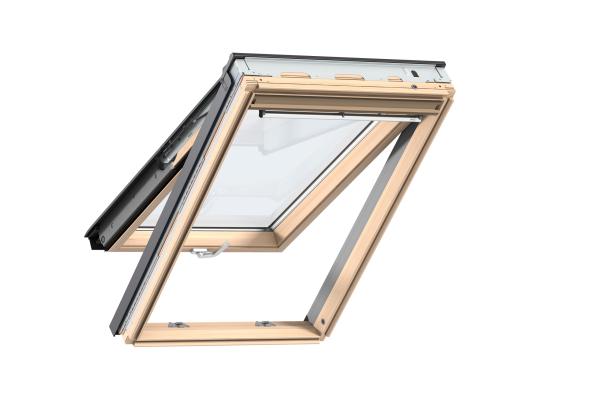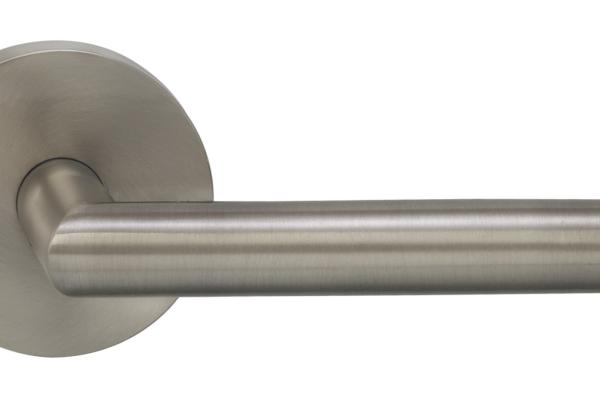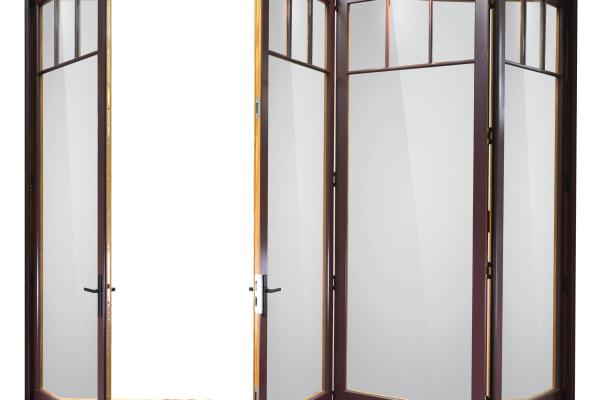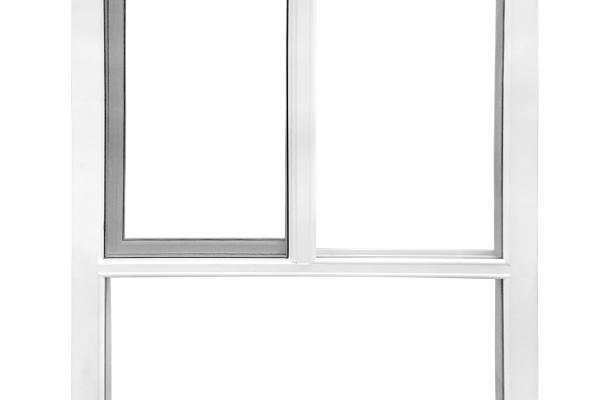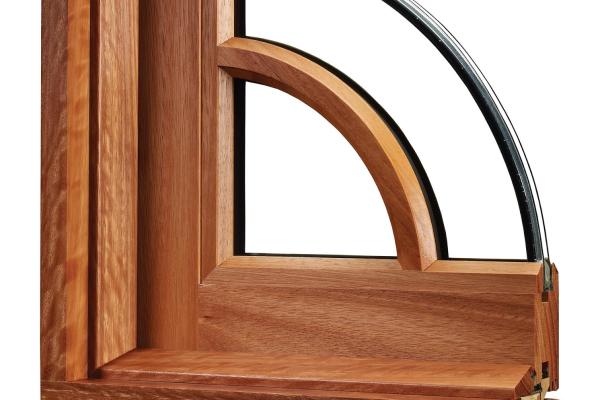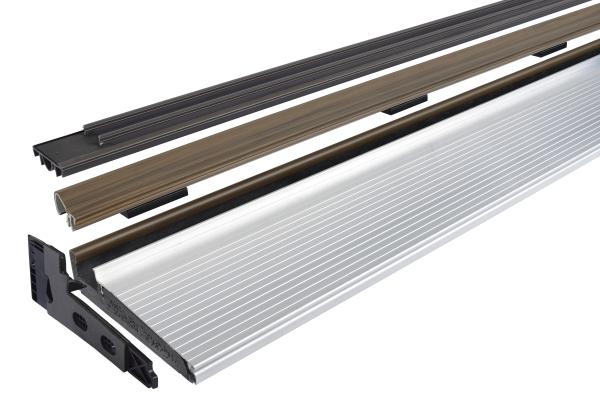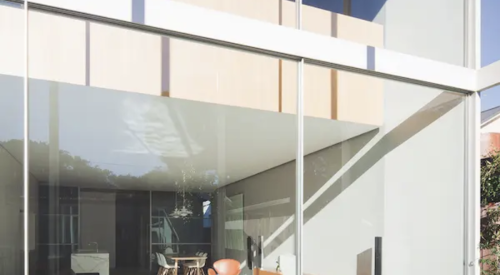Windows have come a long way. The average unit from, say, 100 years ago was likely made from wood, had single-pane glass, and used a weight-and-pulley system. It looked great and worked fine, but it leaked—a lot.
Doors, too, have changed. Solid-wood exterior doors are practically obsolete, replaced by wood veneer, engineered wood, fiberglass, and steel.
Part of Pella Crafted Luxury, the manufacturer specializes in one-of-a-kind traditional and contemporary windows and doors in wood or steel. Its products were used on this Chicago adaptive reuse project that includes traditional hung windows, lift/slide doors, and pivoting doors made from sapele mahogany.
Still, on the chance that you have an opportunity to reuse old wood windows or salvage wood doors, you should. Storm windows will improve the performance of old single-glazed units, and a little elbow grease (and some refinishing) will make vintage wood doors shine.
When it’s time to buy new windows and doors, however, the world is your oyster. In addition to a wide range of styles and functionality, windows have improved greatly, offering such features as double and triple glazing, gas inserts, warm-edge spacers, low-E coatings, and other high-performance tricks. If the budget is big enough, all-steel and all-wood windows and doors are available, as well as exotic cladding such as bronze and copper.
The Series 600 Multi-Slide Door features large rolling panels that stack or slide into pockets to create extra-wide openings. Made from thermally broken aluminum, it features a 2.55-inch stile, sealed stainless steel ball bearing rollers, dual-pane low-E glass, and multi-point locks. Panels can be 84 inches wide and 144 inches tall.
The toast of the market these days is a large patio door, such as a lift/slide or folding unit. Opening up the indoors to the landscape, the doors strike a dramatic pose. Almost all homebuyers want one.
But even with all these options available to residential construction pros, vinyl is the material they turn to the most. According to the American Architectural Manufacturers Association, the industry is forecast to ship 54.1 million windows this year, and 37.3 million of them will be vinyl products. The next closest material is wood—including vinyl- and metal-clad wood—with 8.7 million.
The new affordable vinyl folding system is aimed at the retrofit market as well as custom home and production builders. It features 2 15/16-inch stiles, stainless steel or bronze finish hardware, concealed multi-point locks, and dual-glazed glass. Standard color options include white or tan.
No matter which products you prefer, we have assembled the best of the best, with something for everyone—vinyl, steel, wood, folding, lift/slide, and more. We even added hardware to dress them up and products to help your installations last longer. Specified correctly, these products will improve the look and the performance of your homes.—N.F.M.
In addition to windows and folding doors, the manufacturer specializes in lift/slide doors measuring up to 16 feet tall. Panels lift onto rollers and glide smoothly on a weather-rated flush track with only 3/16-inch projection above the finished floor. Doors can be made from wood or aluminum and in straight, curved, or corner configurations.
What You Need to Know About Folding, Sliding Doors
Large lift/slide and folding patio doors are smoking hot, popular with buyers of production homes as well as custom home clients.
The doors are loved for their ability to bring in light and blur the line between indoors and outdoors. But specifying such large units raises important questions: How will they operate? What is the energy efficiency rating? Will they prevent air and water intrusion?
It also matters if you’re using a lift/slide door with a conventional sill or a zero-threshold (flush-mount) track. Zero-threshold tracks often require drainage, and floors need to be completely level for the doors to work correctly.
Another consideration with lift/slide systems is that track movement must be kept to a minimum, as deflection can affect performance. Such units also should have a significant overhang to prevent water infiltration.
One of the most important considerations is cost. Prices vary, but you can expect to pay between $700 and $1,000 per linear foot (sometimes more). And the price may not include installation. Fortunately, more manufacturers are developing vinyl systems to make the doors more affordable.—N.F.M.
FoldFlat is a new door system that allows glass wall panels to stack and fold flat against the wall and completely out of the way. Designed to give homeowners more space, the doors are available in both aluminum- and wood-framed options.
“When selecting windows and doors for inclusion in our projects, we seek out products from manufacturers with a long history of industry-leading design and craftsmanship. Discerning homeowners are looking for the latest in product enhancements, but they also want peace of mind in knowing that a company with a history of providing a reliable product will be there to stand behind the windows and doors.” -Jeff Nicholson, Principal, Quartersawn
Portella Steel Doors & Windows
The manufacturer’s custom doors and windows feature solid steel frame construction that permits a slender profile and large expanses of glass. Eleven colors and a variety of glazing options are available.
Do You Really Need Triple-Glazed Windows?
by Jesse Thompson, AIA, LEED AP of Kaplan Thompson Architects
As architects dedicated to designing high-quality buildings in the cold state of Maine, we get asked this question quite a bit.
Here are some of the questions we ask our clients and builders to determine if triple glazing is right for their projects:
- How cold does it get where you live?
- How comfortable do you want to be in your building?
- How much machinery do you want constantly working to keep you comfortable?
One guide we use is a recommendation by the Passive House Institute in Germany that no surface in a building should ever fall below 62 degrees F. The reasoning is that if you keep the walls of your building above that temperature you can remove all perimeter heating equipment, keep your clients from putting on a sweater in their fancy new house, and save energy and first cost, all at the same time. We’ve all spent time in a building where the thermostat reads 70 degrees, but we were chilly the whole time. Warm surfaces are a critical component of comfort and have all too often been disregarded because they didn’t “pay back.”
The manufacturer offers a variety of windows that are certified by the Passive House Institute U.S. Offerings include Ultra Series and VistaLuxe Collection extruded aluminum-clad units, such as direct sets, tilt-and-turn, and casements.
What does that mean for designers? In Portland, Maine, it means the center-of-glass insulation value should be a U-value of at least 0.12, or R-8+. That’s only achievable by very high-quality triple glazing. With typical low-E double glazing, the glass surface temperature would be only 54 degrees—or sweater time!
Perhaps you have a client who you suspect will be calling you on the first really cold night wondering why there is condensation staining the gorgeous clear fir you specified for his windows. Or maybe you are dreaming of a window set directly over the client’s headboard so they can see the stars at night from bed but want to make sure there isn’t a cold river of air dropping down on them as they sleep (don’t ask us how we learned that one).
Or perhaps you are trying for a net-zero building and need your heating energy consumption as low as possible to make sure your roof is large enough for the solar panels.
These are only a few of the reasons why we’ve specified triple-glazed windows on our projects. Right now we would estimate that 90 percent of our projects in the Northeast end up with triple glazing, and energy savings has only been part of the puzzle.
These Slide & Seal doors feature hardware that seals automatically without the heavy lifting. Improving on the traditional lift/slide doors, panels glide on recessed stainless steel tracks and automatically seal in the closed position. The aluminum-wood products include adjustable rollers and hardware.
The importance of windows in a design cannot be overstated. Choosing correctly for the project will depend not only on style but quality and function. Energy efficiency and low maintenance are to be considered as well as size and materials. Since windows can create a sense of oneness with the outdoors, slender sight lines can positively impact
that experience.” -Christine Deragon, CAPS, Bright Ideas by Martinec
The 2610F Wall-Mounted Barn Door Hardware is designed for doors from 1 to 1¼ inch thicknesses and weighing up to 125 pounds. The wall-mounted jump-proof aluminum box track is concealed with a built-in fascia in a natural or bronze finish. Other features include adjustable door guides for smooth operation and adjustable track stops to control door travel.
Barn Doors Come on Strong
Barn doors have been used in homes for decades, particularly those spaces with rustic or farmhouse-inspired décor. But over the past few years demand for both the look and convenience of the interior sliding units has picked up dramatically. Manufacturers have followed suit with a growing number of new styles and applications. In most cases, hardware and doors are sold separately, but kits are now common.
“People are becoming more aware of it,” says Michael Myers, marketing director for L.E. Johnson Products, referring to the company’s concealed or exposed wall-mount hardware.
One of the biggest attractions is space savings: Barn doors eliminate a swinging door, instead sliding seamlessly along the wall. The second draw is aesthetics, with a growing appeal for the rustic look and exposed, robust hardware of barn doors.
But even that is changing; not all barn-style doors have that look anymore. “What we’re seeing now is a spread from rustic, which is still popular, all the way over to very modern,” says Tim Johnson, senior director of product marketing for Masonite, which recently introduced two all-inclusive Barn Door Kits. “Being able to hit so many styles of houses is really what’s keeping this trend driving forward.”
Homeowners are getting increasingly creative too. One popular application is to use barn doors to conceal a television in both wall-mount and entertainment center applications.
There are a few things to keep in mind when considering a barn door. The door must be slightly taller and wider than the opening, so remodelers can’t simply convert an existing swinging door into a barn door. Also, Johnson says, most barn doors don’t lock or fit snugly like a traditional unit, so they may not be suitable for applications that require privacy.—K. T.
This story originally appeared in the May/June 2017 issue of Products magazine. See the print version here.

